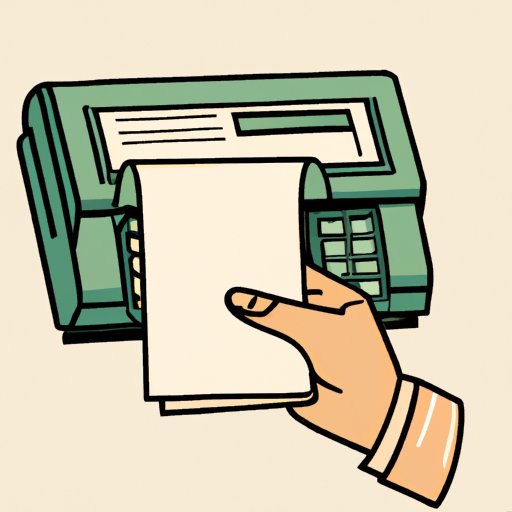
Introduction
Money orders are a reliable way to make payments, whether you are paying rent, sending money to a friend or family member, or making a purchase. Unlike personal checks, they are not linked to your bank account, so you don’t have to worry about overdrafting. Additionally, they offer a way to make a payment if the recipient does not accept checks or cash. However, a common problem that people face is not knowing where to get a money order when they need one. This article aims to provide a comprehensive guide on where to get a money order.
Exploring the Various Places to Get a Money Order – A Comprehensive Overview
There are several types of places that offer money orders, including banks, post offices, retail stores, and some international money transfer companies. Each type of provider has its advantages and disadvantages. Banks generally offer reliable and secure money orders, but they are not always as affordable or convenient as other options. Post offices are a popular choice because they offer consistency and reasonable rates, but they may have limited hours or locations. Retail stores offer convenience and extended hours, but their fees may be higher than other providers.
Your Go-To Guide on Where to Find Money Orders
Here is a list of places to get money orders, along with their specific locations and any relevant details:
1. Banks: Most major banks offer money orders. Some of them include Bank of America, Chase, Wells Fargo, and US Bank. You will need to have an account with the bank to purchase a money order. Fees vary depending on the bank, but they are typically between $5 and $10.
2. Post Offices: Most post offices have money order services. The cost of the money order is $1.25 for amounts up to $500, and up to $1.70 for amounts over $500 up to $1,000. You can pay for the money order with cash or a debit card, but credit cards are not accepted.
3. Retail stores: Many retail stores offer money order services. Some of the most popular ones include Walmart, CVS, and 7-Eleven. Fees vary depending on the store, but they are typically between $1 and $5.
4. International money transfer companies: If you need to send money internationally, companies like Western Union and MoneyGram offer money orders. Fees vary depending on the amount and the destination country.
To find the nearest provider, you can use an online search or store locator. Many providers have online search tools on their websites that allow you to enter your zip code or city and state to find the nearest location.
Where to Get a Money Order: Everything You Need to Know
When getting a money order, there are some key pieces of information to keep in mind. The cost of the money order varies based on the provider, but it typically ranges from $1 to $10. Most providers have a maximum amount that can be sent per money order, which can be up to $1,000 or more. In some cases, providers may require you to pay for the money order with cash, while others accept debit or credit cards. Many providers also require you to bring identification to purchase the money order, due to anti-money laundering regulations.
From Banks to Grocery Stores: The Top Places to Get a Money Order
Based on convenience, cost, and availability, here are some top places to get a money order:
1. Walmart: With over 4,000 stores in the US, Walmart is a convenient choice for many. Their fees are low, typically around $1, and they offer money orders up to $1,000.
2. USPS: If you’re looking for a reliable and consistent option, the post office is a good choice. Their fees are reasonable, and they offer money orders up to $1,000.
3. MoneyGram: For international money orders, MoneyGram is a popular choice. They have over 350,000 locations worldwide, and their fees depend on the destination country and the amount being sent.
Convenient Ways to Obtain a Money Order
In addition to physical money orders, there are alternative options available. For example, you can use an online service like Western Union or MoneyGram to send a money order electronically. Some mobile apps also offer money order services, such as PayPal and Cash App. While online options can be more convenient, they may also have higher fees or longer processing times.
How to Get a Money Order: A Quick and Easy Guide
If you’re ready to get a money order, follow these simple steps:
1. Find a provider: Use an online search or store locator to find a provider near you.
2. Bring ID and cash or payment method: Check the provider’s rules on payment methods and required identification.
3. Fill out the money order: Write the recipient’s name, address, and the amount you are sending.
4. Add your own information: Include your name and address in the “purchaser” section.
5. Keep the receipt: The receipt serves as proof of payment, so make sure to keep it in a safe place.
Conclusion
In conclusion, money orders offer a convenient and reliable way to make payments. While it can be confusing to know where to get a money order, there are many options available, including banks, post offices, retail stores, and international money transfer companies. By following the steps outlined in this guide, you can obtain a money order quickly and easily.




